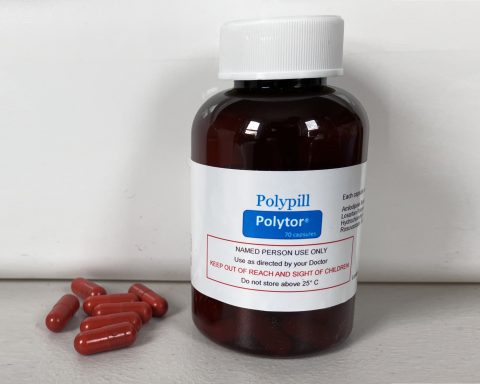
Prescribing opioids has increased since 19981 with 12.8% of England’s population having had a non-cancer opioid prescription dispensed within a year interval. Approximately 50% of them take their prescription for at least 1 year.2 With 43% of adults currently living with a degree of chronic pain in the UK3, It is likely, and concerning, that overprescribing of opioids will continue. An audit of opioid prescribing on GP placement inspired me to reflect on how medical education is failing to prepare the next generation of prescribers to be ‘opioid aware’.
Is medical education too outdated given this ‘epidemic’?
Pain education is insufficiently presented in medical schools given the burden of pain in the general population. Further, pain education is largely fragmented throughout the curricula with no standardized approach to tackle such a nationwide issue.4 In my experience, most clinical pain teaching is based around the World Health Organization (WHO) Analgesic Ladder (which is cancer-based and should not be used to manage chronic pain -a very different type of pain), pharmacology, and palliative care. Teaching also included the benefits and the harms of opioids but only seemed to be scratching the surface of pain management. Further, teaching critically ignored the emotional pull of balancing the desire to help a patient in distress without causing more harm such as addiction, tolerance, and worsened pain – opioid-induced hyperalgesia. Such an ethical dilemma was never debated during medical school but is clinically relevant in the day-to-day decisions doctors have to make.
…medical education is failing to prepare the next generation of prescribers to be ‘opioid aware’.
More teaching is needed on how to manage patient’s expectations, and inform them of the potential for addiction such as using validated screening tools. All prescribers need to be aware of services available for addiction, including that which is iatrogenic. Without action, this will leave the next generation of prescribers uninformed of the complex reality of patients experiencing pain and how to appropriately assess and treat them.
Is it too early to teach medical students?
Prescribing behaviours have been shown to be solidified during medical school.5 As the United States (US) is even deeper into an ‘epidemic’, a more robust response to the opioid crisis was initiated. The majority of medical schools (87%) in the US include training in the nature of pain; pain assessment and measurement (including assessment of risk of addiction); pain management (including addiction treatment and overdose); and the context of pain and substance use disorder.6 Even though no clear results have been published to determine the efficacy of the curricular changes, it is a responsible step in the right direction. Although curricular changes are part of the solution, it does require a massive number of resources to fulfill. Is there an easier way to do this?
Can primary care fill in the gaps?
Primary care plays a key role in medical education, but also in prescribing opioids…
Primary care plays a key role in medical education, but also in prescribing opioids, as most patients start their prescriptions in general practice.7 Additionally, variations in prescribing are not explained by patient or practice characteristics but by individual GP prescribing habits.7 As prescribing is a practical skill, learning in the clinical setting (such as a primary care practice) can help ‘get to grips’ with such a skill.8 Courses such as the ‘Essential Pain Management’ offer a great addition to medical school curriculums and can be taught as a half-day course to medical students. Academically, through collaboration with medical students, quality improvement and patient safety (QI/PS) projects can be undertaken to advocate for responsible prescribing as well as achieve a GMC requirement for newly qualified doctors.9 Opportunities such as student selected components (SSCs) and quality improvement projects/studies are available.10 Certainly, more literature is needed to assess feasibility but can be a step forward in addressing appropriate opioid prescribing. Medical Education is foundational for safe prescribing and optimizing it will serve to protect patients from harms, reduce demands on overworked GPs, and save NHS resources.
References
- Curtis HJ, Croker R, Walker AJ, Richards GC, Quinlan J, Goldacre B. Opioid prescribing trends and geographical variation in England, 1998-2018: a retrospective database study. Lancet Psychiatry [Internet]. 2019 Feb 1 [cited 2022 Aug 5];6(2):140–50. Available from: https://pubmed.ncbi.nlm.nih.gov/30580987/
- Marsden J, White M, Annand F, Burkinshaw P, Carville S, Eastwood B, et al. Medicines associated with dependence or withdrawal: a mixed-methods public health review and national database study in England. Lancet Psychiatry [Internet]. 2019 Nov 1 [cited 2022 Aug 5];6(11):935–50. Available from: https://pubmed.ncbi.nlm.nih.gov/31588045/
- Fayaz A, Croft P, Langford RM, Donaldson LJ, Jones GT. Prevalence of chronic pain in the UK: a systematic review and meta-analysis of population studies. BMJ Open [Internet]. 2016 Jun 1 [cited 2022 Aug 5];6(6):e010364. Available from: https://bmjopen.bmj.com/content/6/6/e010364
- Briggs E v., Carr ECJ, Whittaker MS. Survey of undergraduate pain curricula for healthcare professionals in the United Kingdom. Eur J Pain [Internet]. 2011 [cited 2022 Aug 5];15(8):789–95. Available from: https://pubmed.ncbi.nlm.nih.gov/21330174/
- Aronson JK. A prescription for better prescribing. Br J Clin Pharmacol [Internet]. 2006 May [cited 2022 Aug 5];61(5):487. Available from: /pmc/articles/PMC1885053/
- Addressing the Opioid Epidemic: U.S. Medical School Curricular Approaches | AAMC [Internet]. [cited 2022 Aug 23]. Available from: https://www.aamc.org/data-reports/analysis-brief/report/addressing-opioid-epidemic-us-medical-school-curricular-approaches
- Foy R, Leaman B, McCrorie C, Petty D, House A, Bennett M, et al. Prescribed opioids in primary care: cross-sectional and longitudinal analyses of influence of patient and practice characteristics. BMJ Open [Internet]. 2016 May 1 [cited 2022 Aug 5];6(5):e010276. Available from: https://bmjopen.bmj.com/content/6/5/e010276
- Rothwell C, Burford B, Morrison J, Morrow G, Allen M, Davies C, et al. Junior doctors prescribing: enhancing their learning in practice. Br J Clin Pharmacol [Internet]. 2012 [cited 2022 Aug 5];73(2):194–202. Available from: https://pubmed.ncbi.nlm.nih.gov/21752067/
- Outcomes for graduates guidance – GMC [Internet]. 2020 [cited 2022 Aug 23]. Available from: https://www.gmc-uk.org/education/standards-guidance-and-curricula/standards-and-outcomes/outcomes-for-graduates/outcomes-for-graduate
- Doherty W, Quality Improvement in medical education: what is it and why is it important? https://www.asme.org.uk/news/blog/quality-improvement-in-medical-education-what-is-it-and-why-is-it-important.html [accessed 8/9/22]
Featured photo by Akshar Dave on Unsplash








